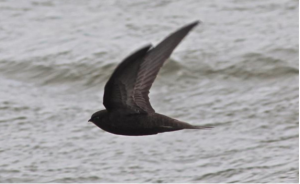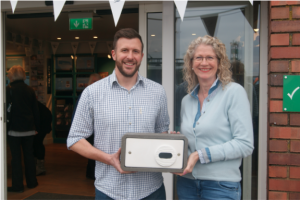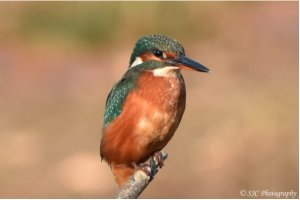Those of you that have been following our work for a number of years now will know about the nocturnal migration work we’ve been carrying out since 2015. At night, throughout the year, when we’re all in bed, many thousands of birds migrate across the night sky, their presence only given away by the calls they make to one another as they move from A to B in the darkness. Now, these movements may only involve short local movements that birds like Barn and Tawny Owls make or it may be long distance movements like waders, thrush’s and terns make. Regardless of the distance covered, many of these birds call at night and its only now that we’re getting our heads around what species do move at night and just how many there are.
Since 2015 we’ve been pretty obsessed with learning about this topic, so have been deploying sound recording equipment at night at sites we think birds will be travelling through. After a nights recording we can then analyse and listen to the recordings to find out what species have been passing over that very night. Interesting recent discoveries have including the discovery that Ortolan Bunting, a rare passage migrant in Dorset is actually a regular night migrant over Dorset sky’s each August and September. Also, each October and November, vast numbers (thousands) of Redwing, Song Thrush, Blackbird and Fieldfare are passing over Poole Old Town during the dead of night. We also record lots of waders, all of which migrate long distances at night, as well as a few geese and tern species too.
Forever wanting to learn new things, we recently approached the National Trust Purbeck team about the possibility of setting up our sound recording equipment at night within the high grounds of Corfe Castle. The reason for this is because we’ve long assumed that ‘the Corfe Gap’ is in fact a migration route in and out of Poole Harbour for many birds as we often see finch, hirundines and pipit migration through there in the autumn. But what goes through there at night?
With kindness and enthusiasm the Purbeck NT team said yes to our hair-brained idea, so this summer and autumn we’ll be carrying out night recording sessions from within Corfe Castle its self….HOW COOL IS THAT!
What have we learnt already?
In prep for the autumn, which is the busiest time for bird migration we’ve recently carried out three tester recording sessions (two in late May, one in early June) and have already discovered something quite interesting. It seems some local water birds are using the Corfe Gap as a short cut to other water bodies close by, with Moorhen, Water Rail and Little Grebe all being logged in our recordings flying over Corfe Castle at night. In one of our May recordings we also logged Dunlin and Knot flying past distantly, suggesting already that some waders are using this route as a short cut to the harbour.
Little Grebe – Call of night migrant through the Corfe Gap 30/05/19 @ 23:10
Water Rail – Call of local bird moving at night – Corfe Castle 09/06/19 @ 23:01
Moorhen – Call of local bird moving at night over Corfe Castle 10/06/19 @ 02:19
Also, its been discovered that the local Tawny Owls have been successful as we’ve been hearing calling juveniles in our recordings. And who can ignore the eerie call of the Barn Owl which seems to be calling frequently around the castle with it’s rasping screech giving it the old nickname The Demon/Devil Bird.
Barn Owl – Call of local bird flying through the Corfe Gap – 31/05/19 @ 23:35
With so much heard already in just our first three recording sessions, its hoped the peaked months (Late July to late October) will turn up some more exciting surprises.























